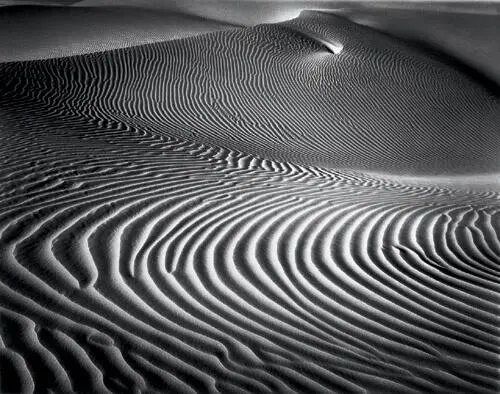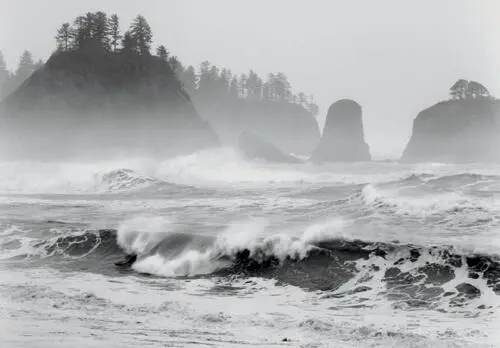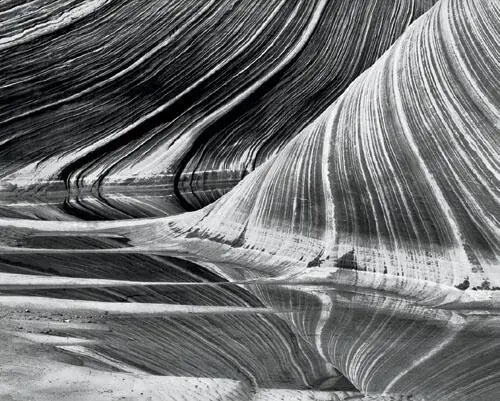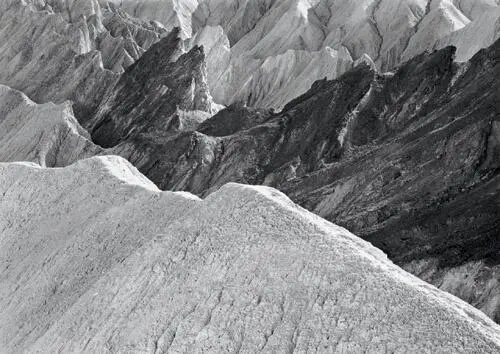Bruce Barnbaum - The Art of Photography - An Approach to Personal Expression
Здесь есть возможность читать онлайн «Bruce Barnbaum - The Art of Photography - An Approach to Personal Expression» весь текст электронной книги совершенно бесплатно (целиком полную версию без сокращений). В некоторых случаях можно слушать аудио, скачать через торрент в формате fb2 и присутствует краткое содержание. Жанр: Старинная литература, на английском языке. Описание произведения, (предисловие) а так же отзывы посетителей доступны на портале библиотеки ЛибКат.
- Название:The Art of Photography: An Approach to Personal Expression
- Автор:
- Жанр:
- Год:неизвестен
- ISBN:нет данных
- Рейтинг книги:5 / 5. Голосов: 1
-
Избранное:Добавить в избранное
- Отзывы:
-
Ваша оценка:
- 100
- 1
- 2
- 3
- 4
- 5
The Art of Photography: An Approach to Personal Expression: краткое содержание, описание и аннотация
Предлагаем к чтению аннотацию, описание, краткое содержание или предисловие (зависит от того, что написал сам автор книги «The Art of Photography: An Approach to Personal Expression»). Если вы не нашли необходимую информацию о книге — напишите в комментариях, мы постараемся отыскать её.
The Art of Photography: An Approach to Personal Expression — читать онлайн бесплатно полную книгу (весь текст) целиком
Ниже представлен текст книги, разбитый по страницам. Система сохранения места последней прочитанной страницы, позволяет с удобством читать онлайн бесплатно книгу «The Art of Photography: An Approach to Personal Expression», без необходимости каждый раз заново искать на чём Вы остановились. Поставьте закладку, и сможете в любой момент перейти на страницу, на которой закончили чтение.
Интервал:
Закладка:
This doesn’t necessarily mean that you can make a great photograph in every location at any time of day, certainly no more so than confining yourself to early and late hour photography could guarantee the making of a great photograph.

This photograph, made about 2:30 p.m., is a counterexample to the rule that good landscapes can only be made near sunrise and sunset. The slope of the land rose gently to the left, or west, and the photograph was made in early November, when the sun is relatively low in the sky. Everything came together perfectly for a strong, open, midday landscape .
Figure 13-9. Elegant Dune

This seascape was made at about 1:00 p.m. while crashing surf pounded the shore between huge tree-covered sea stacks .
Figure 13-10. Surf, Olympic Peninsula, Washington
The making of a great landscape photograph requires a number of convergent conditions, among them: your goals; special lighting and/or atmospheric conditions; special relationships of lines, forms, or tonalities; the equipment and materials you have available; your insight, intuition, and creativity; and any number of other fortuitous conditions.
Some of Edward Weston’s most celebrated landscapes were made at noon, like the eroded patterns at Zabriskie Point in Death Valley. Some of his famous images of nudes on sand dunes were made at midday with axis light. Weston used midday light with confidence, and there is no reason you can’t do so as well. I’ve photographed on the sand dunes in Death Valley at Stove Pipe Wells, and have made photographs at all times of the day that I love, including those midday hours that so many photographers avoid (see Figure 5-2, and Figure 13-9).
Throughout my career, I’ve successfully photographed at all times of the day (and even at night). It’s true that the early and late hours are quite special. Particularly in wide-open landscapes, the low angle of the sun in early and late hours rakes across the landscape, yielding remarkable intersections of light and shadow that exist only during those fleeting moments. Contours of the land stand out that may be invisible at midday when the sun hits at angles approaching 90 degrees. But consider this: not all landscapes are wide-open landscapes. Furthermore, not all wonderful relationships of lines or forms take place only under a low angle of light. Your insight, intuition, and creativity do not mysteriously disappear at midday, nor does your equipment, nor your materials.

I made this image between 11:00 a.m. and noon in northern Arizona after morning clouds abruptly disappeared. The evenly lit scene of deep red rocks with nearly white banding is another example of a midday landscape that was perfectly lit for what it was. I used a #58 deep green filter to further darken the red and build contrast .
Figure 13-11. Striations and Reflections, Coyote Buttes
Restricting your photography to the hours near sunrise or sunset limits your exploration to the times that low light exists. That cramps your options. Low light is fine, but it’s not the only good light. Suppose you wake up on a foggy, rainy, or cloudy day, and that light remains constant. One of my most noteworthy photographs (Figure 3-7) was made under wonderfully foggy conditions at about 11:30 a.m. The fog had several benefits: it softened the light in the forest, it evened out the light (i.e., it removed bright splotches and dark shadows), and it simplified the background by eliminating it! Trees were visible for only a short distance before disappearing into the fog. I couldn’t have made that photograph at noon on a sunny day, nor could I have made it near sunrise or sunset; alternating bright sunlight and deep shade on the trees would have transformed the image into a confusing mess of light and dark spots. Fog at noon was perfect.
But the deep forest was an enclosed situation. The question arises: can you make midday photographs in an open landscape? Of course you can—remember, Weston did! It may not be easy, but it can be done. In December 2000, I went to the Olympic Peninsula on a wild, windy, rainy day. Wave upon wave pounded in, with spindrift flying off each one as it rolled toward the beach. It would have made no difference if the time were sunrise, midday, or sunset. Conditions were exceptional. There was no reason to put down my camera simply because it was 1:00 p.m. (Figure 13-10).

Late morning to early afternoon is the only sensible time to photograph this dramatic, rugged landscape of colorfully eroded clays on the east flank of Death Valley. Shortly after sunrise, the entire area remains in shadow for quite some time, rendering it difficult to photograph (though it can be done). Midday is far better .
Figure 13-12. Pinnacles, Golden Canyon
In 1998, I hiked into Coyote Buttes, Arizona where I had photographed for several years. I was hoping for cloudy conditions and soft light. Lo and behold, I got what I wanted! But at about 9:30 a.m. the clouds simply evaporated. Suddenly I was stuck with a blank blue sky, full glaring sunlight. I was quite disappointed, but rather than packing my bags to leave, I continued walking, looking, and enjoying this remarkable area. Just as suddenly as the clouds disappeared, I started seeing wonderful things all around me, and over the next three hours I made three of my best photographs at Coyote Buttes (Figure 13-11).
Golden Canyon in Death Valley is a moonscape of severely eroded clay with virtually nothing growing on its slopes. But magnificent colors and tones and sharp pinnacles make it one of the most dramatic landscapes imaginable. The famous Zabriskie Point reaches an elevation of 1,200 feet, while the canyon cuts down to sea level. Golden Canyon gets no early sunlight because it lies in a deep bowl with higher ground to the east. But at midday, the light is spectacular. Figure 13-12 was made in the late morning, fully four hours after sunrise, and could not have been made at any other time. Here is a case where early morning light offered little, but midday light made the scene came alive. Late afternoon light would have flattened out the scene, again producing nothing of value.
I could cite dozens of examples of slit canyon photographs made in the midday hours. It’s simply too dark to see them earlier and later. These photographs constitute my largest single body of images. While I recognize that they are not exactly landscapes in the usual sense of the word, they still are photographs of landforms.
Examples of successful midday landscape photographs abound. The bottom line here is simple: Don’t shut down when the sun gets high in the sky. You’re shortchanging yourself if you do so. There’s even more potential than I’ve discussed up to now. What about small details? Few photographers would suggest putting your camera away at midday if you’re interested in the small details within the landscape: flowers, mosses, rocks, bark, ice, ripples on a pond... you name it! These offer wonderful possibilities—don’t ignore them. Details can work for you at any time of the day.
Keep in mind that when you’re looking at a landscape, you’re not just looking at the land. You’re looking at light. You’re looking at lines and forms. You’re looking at relationships among lines and forms. You’re putting your creativity to work to find the compelling visual relationships that transform a wonderful scene—or even an ordinary scene—into a wonderful photograph, one that communicates your world-view to others. Those situations occur throughout the day. Limiting yourself to the early and late hours limits your options.
Читать дальшеИнтервал:
Закладка:
Похожие книги на «The Art of Photography: An Approach to Personal Expression»
Представляем Вашему вниманию похожие книги на «The Art of Photography: An Approach to Personal Expression» списком для выбора. Мы отобрали схожую по названию и смыслу литературу в надежде предоставить читателям больше вариантов отыскать новые, интересные, ещё непрочитанные произведения.
Обсуждение, отзывы о книге «The Art of Photography: An Approach to Personal Expression» и просто собственные мнения читателей. Оставьте ваши комментарии, напишите, что Вы думаете о произведении, его смысле или главных героях. Укажите что конкретно понравилось, а что нет, и почему Вы так считаете.












